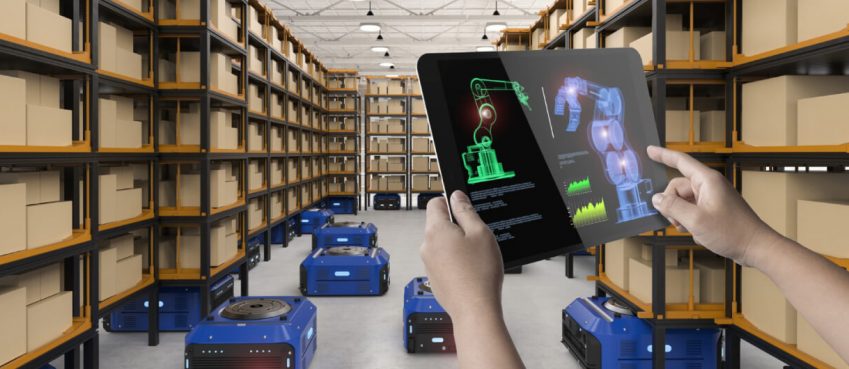
The chaos at ports continues with no end. A troubling realization is sinking into the mind: The effects of the ” Great Supply Chain Distortion” are already being felt throughout the country. For example, 30% of baby formula brands may be out of stock soon. This could cause retailers to limit the number of containers they can sell and leave parents concerned that their children won’t get enough food. This issue covers all industries and has an impact on automotive, healthcare IT, hospitality, manufacturing, apparel, as well as other areas.
What’s the problem? Infrastructure and the shortage of truck drivers are frequently blamed. In 2021, the U.S. trucking industry saw a record-breaking deficit of 80.000 drivers. This is logical, as truck drivers transport a significant portion of American freight. But it’s not all that causes supply chain problems.
Supply Chain Challenges
While current inventory and planning systems are based on fixed lead time and demand prediction, the real world is based on dynamic lead times. Port congestion is a result of poor planning and decision-making by financial executives and procurement leaders. Leaders must stop planning and instead manage their shipments.
Long queues form when a transport medium is changed for shipping goods. This further aggravates the problem.
While it may seem logical to believe that new modes of transportation could help ease congestion, it is not a practical solution.
Without significant investments, choke points cannot grow. Therefore, port restrictions are addressed from an infrastructure perspective. Retailers will need to be supported in order to make changes in their planning and prioritization of shipments.
Planning Shipments More Accurately
To plan more accurately, retailers need real-time inventory visibility across all their businesses. If possible, the stowage plan information should be shared with third-party logistics companies that exit the gate as one value stream. This improves efficiency and the speed of the first-in/first-out process.
AI is able to detect changes in transport or routes early enough so that critical items are delivered on time.
Even though AI implementation in supply chain management is still new, many early adopters are seeing success. McKinsey & Co. found that AI-enabled supply chain management helped enterprises reduce logistics costs by 15%, and inventory levels by 35%. More companies are becoming interested in AI technology as it improves. Infoholic Research predicts that AI will continue to grow in the logistics and supply chains markets at a compound annual rate of 42.9% through 2023.
Also read: The Top 10 Digital Process Automation (DPA) ToolsUse AI Cases to Overcome Supply Chain Disruption
There is hope that AI can help reduce supply chain problems as AI adoption grows. Here are some examples of critical AI use cases
1. Predict on-time, in-full Rate Drops.
Customers have grown accustomed to receiving their goods within days. World Economic Forum data indicates that delivery times in the U.S.A and Europe will reach record levels towards the end of 2021. These increased delivery times will likely continue, based on the current environment.
Buyers expect that companies they buy from will have backup plans in place to ensure prompt deliveries, even in the face of unforeseeable circumstances like natural disasters or poor weather conditions.
AI can assist companies to predict on-time and infull drop early by using historical data to determine how vendors fulfill orders. Companies can set deadlines for switching modes of transport to ensure that customers with the highest profit margins are served. AI also provides complete visibility across the entire value chain making it possible to quickly identify and eliminate bottlenecks.
2. Prioritize Customers who are High-Cost and not Fitting.
Some business relationships may not be a good fit. Gartner predicts that 75% of companies will lose customers who are not a good fit by 2025.
While some companies may not be ready for the breakup of expensive clients, these loss-leaders shouldn’t be at the top of their priority lists.
It can be difficult for businesses to identify these customers. AI can identify bad customers and deplete precious capacity by using sorting algorithms. AI also identifies new opportunities to improve and shows how they will impact your bottom line.
3. Profit Margins can be Increased
Companies that do not have a clear understanding of consumer demand run the risk of pushing products that don’t sell. This can lead to businesses losing millions of dollars.
AI-powered forecasting is a way for companies to detect changes in demand early and optimize products to maximize profit margins.
McKinsey claims that AI-enhanced supply chain management can reduce lost sales due to out-of-stock products by 65%. Sales teams can use AI to identify cross-sell and upsell opportunities for key accounts. Companies often don’t know who they should upsell to. Sales teams are constantly collecting data because the majority of sales tasks happen online. This information can be used by AI to improve the efficiency of sales teams.
Also read: 10 Best AI Video Generators In 2025 (Free & Paid)4. Ship Faster
Convey’s survey found that 28.6% said they would place orders with companies that deliver within one week of purchasing. This is a very short time frame, so companies need to ship products faster if they want consumers to shop with them.
AI can detect shippers that slow down the supply chain. Companies can identify the shippers who slow down the supply chain and remove them to make room for someone more efficient. Suppliers can also use AI to simulate bottlenecks or disruptions.
When an AI detects that a certain portion of the supply chain has become bottlenecked it can predict when companies will experience a shortage. This is based on stock levels and extended lead times.
Overcoming the “Great Supply Chain Disruption”, will take more time than just time. Businesses must change their plans if they want to deliver products efficiently. Companies will have the ability to use AI technology to improve their supply chain management.
Top 10 News
-
01
Top 10 Deep Learning Multimodal Models & Their Uses
Tuesday August 12, 2025
-
02
10 Google AI Mode Facts That Every SEOs Should Know (And Wha...
Friday July 4, 2025
-
03
Top 10 visionOS 26 Features & Announcement (With Video)
Thursday June 12, 2025
-
04
Top 10 Veo 3 AI Video Generators in 2025 (Compared & Te...
Tuesday June 10, 2025
-
05
Top 10 AI GPUs That Can Increase Work Productivity By 30% (W...
Wednesday May 28, 2025
-
06
[10 BEST] AI Influencer Generator Apps Trending Right Now
Monday March 17, 2025
-
07
The 10 Best Companies Providing Electric Fencing For Busines...
Tuesday March 11, 2025
-
08
Top 10 Social Security Fairness Act Benefits In 2025
Wednesday March 5, 2025
-
09
Top 10 AI Infrastructure Companies In The World
Tuesday February 11, 2025
-
10
What Are Top 10 Blood Thinners To Minimize Heart Disease?
Wednesday January 22, 2025







